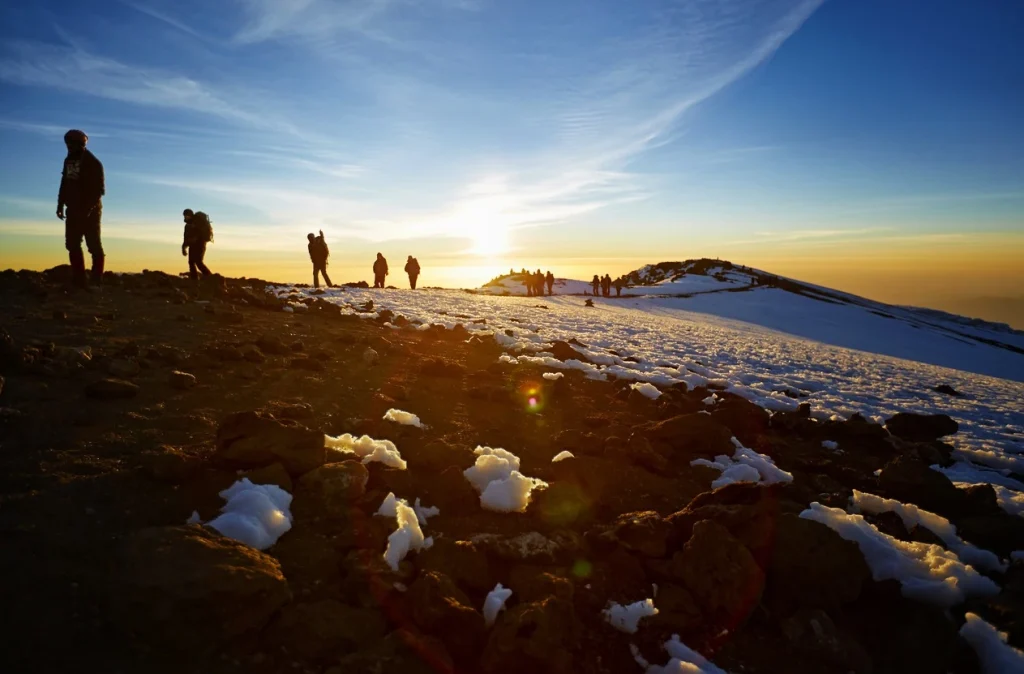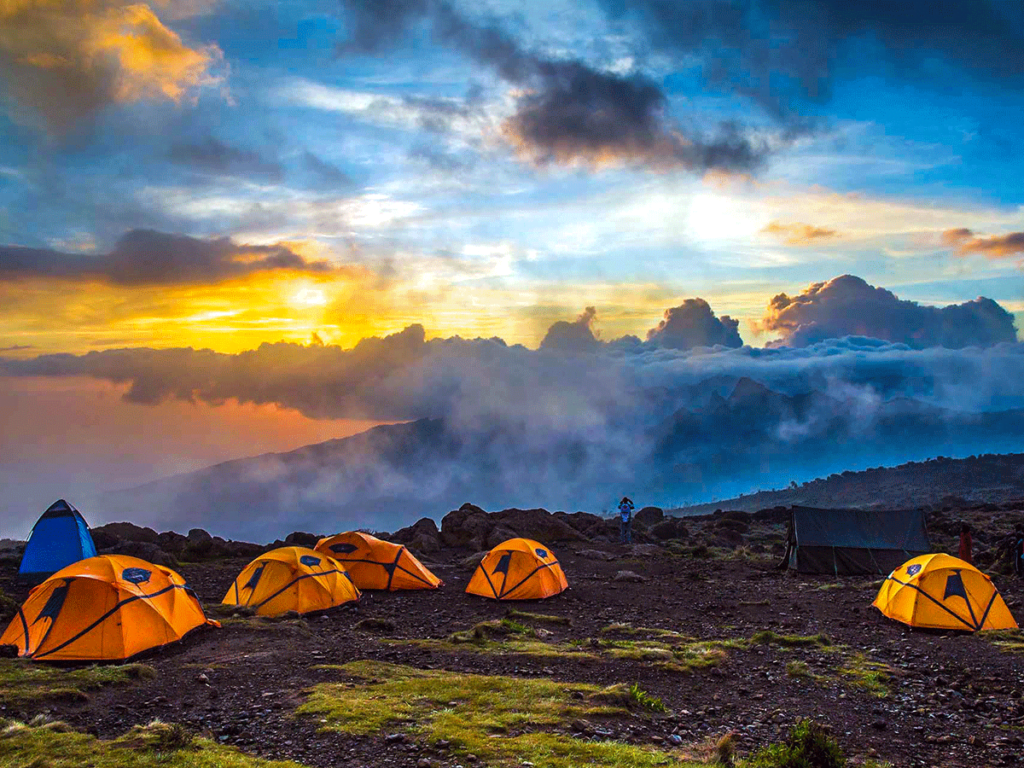Climbing Mount Kilimanjaro: A Comprehensive Guide
Embarking on a journey to climb Mount Kilimanjaro is more than just conquering Africa’s highest peak; it’s an odyssey of self-discovery, resilience, and awe-inspiring natural beauty. As you stand beneath its majestic slopes, you’re drawn into a realm where earth meets sky, where every step forward is a testament to human endurance and spirit. In this comprehensive guide, we unveil the secrets of scaling Kilimanjaro, from choosing the perfect time to embark on this epic adventure to mastering the art of preparation, selecting the ideal route, and packing your essentials. Whether you’re a seasoned mountaineer seeking the ultimate challenge or a first-time climber craving an unforgettable experience, join us as we unravel the wonders of Mount Kilimanjaro and unlock the gateway to one of the world’s most iconic summits.

Table of Contents:
- Introduction
- Best Time to Climb Mount Kilimanjaro
- Climbing Routes
- Preparation and Training
- Packing List
- Safety Tips
- Conclusion
1. Introduction:
Mount Kilimanjaro, towering at 19,341 feet (5,895 meters), is Africa’s highest peak and one of the world’s most sought-after climbing destinations. Located in Tanzania, Kilimanjaro offers a range of climbing routes that cater to different skill levels and preferences. Climbing Kilimanjaro is a challenging yet rewarding experience that promises breathtaking views and a sense of accomplishment.
2. Best Time to Climb Mount Kilimanjaro:
The best time to climb Mount Kilimanjaro is during the dry season, which typically runs from late June to October and from December to February. During these months, the weather is more stable, with clear skies and lower chances of rainfall. Climbing during the dry season provides better visibility and reduces the risk of encountering slippery trails or adverse weather conditions.
3. Climbing Routes:

There are several climbing routes up Mount Kilimanjaro, each offering unique experiences and varying levels of difficulty. The most popular routes include:
- Marangu Route: Also known as the “Coca-Cola” route, it is the shortest and one of the less challenging routes, featuring hut accommodations along the way.
- Machame Route: Known for its scenic beauty, the Machame route is more challenging but offers stunning views and a higher success rate.
- Lemosho Route: This route is favored for its scenic variety and fewer crowds, making it a great option for those seeking a more remote experience.
- Rongai Route: Starting from the northern side of the mountain, the Rongai route is less crowded and offers a unique perspective of Kilimanjaro.
4. Preparation and Training:
Preparing for a Mount Kilimanjaro climb requires physical fitness, mental readiness, and proper planning. It is recommended to engage in regular cardiovascular exercise, strength training, and altitude acclimatization activities. Additionally, familiarize yourself with the terrain, weather conditions, and potential challenges you may encounter during the climb.
5. Packing List:
A well-prepared packing list is essential for a successful climb up Mount Kilimanjaro. Here’s a comprehensive list of items to bring:
- Clothing: Layered clothing suitable for varying temperatures, including moisture-wicking base layers, insulating mid-layers, and a waterproof outer shell.
- Footwear: Sturdy, broken-in hiking boots with ankle support and good traction, along with comfortable camp shoes.
- Camping Gear: Tent, sleeping bag rated for cold temperatures, sleeping pad, and headlamp or flashlight with extra batteries.
- Personal Items: Sunscreen, sunglasses, lip balm with SPF, toiletries, medications, and a first-aid kit.
- Accessories: Hat or beanie, gloves or mittens, trekking poles, and a backpack with a rain cover.
- Nutrition: High-energy snacks, hydration system or water bottles, and electrolyte-replenishing drinks or tablets.
- Miscellaneous: Camera or smartphone for capturing memories, trekking permit, passport, and travel insurance documents.
6. Safety Tips:
- Acclimatize gradually to the increasing altitude by following a slow and steady pace.
- Stay hydrated by drinking plenty of water throughout the climb.
- Listen to your body and communicate any symptoms of altitude sickness to your guide.
- Follow the instructions of your experienced guide and adhere to safety protocols at all times.
- Be prepared for changing weather conditions and pack accordingly.
- Respect the natural environment and leave no trace of your presence.
7. Conclusion:
Climbing Mount Kilimanjaro is a challenging yet immensely rewarding adventure that requires proper planning, preparation, and respect for the environment. By choosing the best time to climb, selecting an appropriate route, and packing essential gear, you can embark on a memorable journey to the “Roof of Africa.” Whether you reach the summit or not, the experience of trekking through diverse landscapes and conquering personal challenges will stay with you forever.
